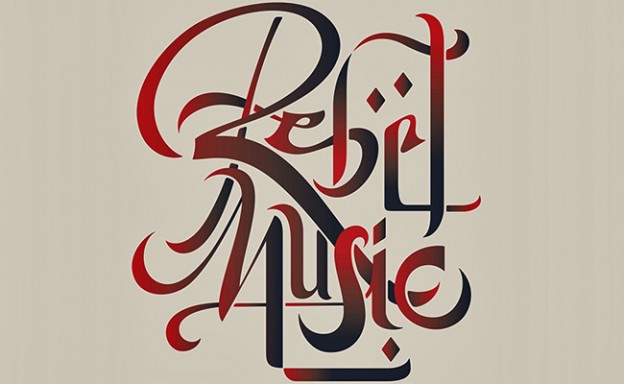Continued History
Text by Dawoud Kringle
In this part of the Jazz and Islam Series, I will provide a perspective on the growth of Islam among American jazz musicians.
 Many of the earlier converts to Islam worked at raising money to bring Muslim / Sufi teachers to the USA. Talib Daoud and his wife, singer Dakota Staton (a.k.a. Aliyah Rabia) taught Islam in Philadelphia, PA. She also opened a store in New York City that sold African art and wares, and Islamic books and supplies. An Egyptian man named Sheikh Mahmoud Hassan Rabwan taught Islam and Arabic there. In the New York area a few Muslim owned venues, mostly restaurants, opened that featured musical performances. These included “The East” and “The House of Peace.” Mosques such as the Mosque of Islamic Brotherhood used to hold benefit concerts, which featured performers such as Alice Coltrane, and others. Later, a performance venue opened by saxophonist, composer, bandleader, teacher, and mentor Muhammad Salahuddin (1930-2004) called “The University of the Streets” featured performances, workshops, and music instruction.
Many of the earlier converts to Islam worked at raising money to bring Muslim / Sufi teachers to the USA. Talib Daoud and his wife, singer Dakota Staton (a.k.a. Aliyah Rabia) taught Islam in Philadelphia, PA. She also opened a store in New York City that sold African art and wares, and Islamic books and supplies. An Egyptian man named Sheikh Mahmoud Hassan Rabwan taught Islam and Arabic there. In the New York area a few Muslim owned venues, mostly restaurants, opened that featured musical performances. These included “The East” and “The House of Peace.” Mosques such as the Mosque of Islamic Brotherhood used to hold benefit concerts, which featured performers such as Alice Coltrane, and others. Later, a performance venue opened by saxophonist, composer, bandleader, teacher, and mentor Muhammad Salahuddin (1930-2004) called “The University of the Streets” featured performances, workshops, and music instruction.
A spiritual vacuum existed in America. While this was in no way confined to the African Americans, they would prove to have spearheaded the rise of Islam in America from its centuries-long dormancy. And in the early years, jazz as cultural and artistic phenomena was a catalyst for this phenomenon.
The efforts of many of the early “pioneers” were not always well received. A few musicians, in accord with afrocentricity, adopted Muslim names simply to combat racism and to develop personal identity. There were also the very obvious racist reactions that the white power structures had against Islam. Many musicians had difficulty getting work if they had a Muslim name, or if it was common knowledge that they were Muslims. Dakota Staton, for example, said that it was difficult to get bookings in clubs because the owners assumed that she was a “black Muslim.” Sometimes musicians who were open in their practice and propagation of Islam met with violent opposition. Occasionally they would be the victims of violent attacks. In the 1960s, a drummer known as Nasserdin (a friend of John Coltrane) was beaten to death by the Philadelphia police when they found him making salat (Islamic prayer) on the sidewalk.
The movement among jazz musicians toward Islam coincided with the surge of the Zionist movement for creation and establishment of the State of Israel. The result was that a lot of friction arose between Jews and Muslims. An unofficial boycott in New York of jazz musicians with Muslim names arose among Jewish music industry executives and venue owners, and caused a great deal of financial difficulty for Muslim jazz artists.
Some Muslim musicians downplayed their religious beliefs by using their “old” names and treating Islam as a private matter. Some found disapproval among other Muslims because of the belief that music is religiously forbidden.
The effect that Islam had upon the music itself would take a little more time. Most musicians were primarily concerned with earning a living and keeping abreast of the revolutionary changes that occurred in the music. The direct manifestation of Islam as an element in the music didn’t begin until the 1950s. Musicians would be more vocal about their Islam, and incorporated Islamic themes and concepts into their music; as well as blending Eastern and African music with jazz.
The way this was received depended upon several variables. On the one hand, the manner of its presentation was instrumental in its acceptance. Sometimes an indirect approach was taken: for example, Doug Carn’s “God is One”, Pharoah Sanders and Leon Thomas’ “The Creator Has a Master Plan”, or Yusef Lateef’s “Prayer to the East”. Some were more direct, such as Saunders and Thomas’ “Hum Allah”. Some non-Muslims used Islamic imagery in their work. Alice Coltrane, a convert to Hinduism, recorded several compositions with Islamic references: such as “Oh Allah”, a collaboration with Ornette Coleman. Poet Amiri Baraka (a.k.a. LeRoi Jones) had a record label called Jihad Records.
There were also the Islamic schools of thought, such as the Ahmediyyas, the Sunnis, the various Sufi groups, etc., each of whom had a different approach. The influence of Islam had a good effect upon many musicians, and the community surrounding them. For example, many converts to Islam had, at one time, serious drug and alcohol abuse problems. Their practice of Islam enabled them to stop using them.
In part three of this series, I will examine individual jazz musicians.
(Much of the material in this series is from my as yet unpublished book A Garden of Air and Light: The Relationship Between Music and Islamic Spirituality and Culture (c) 2004. Used by DBDBD NY & MFM by permission of the author).


